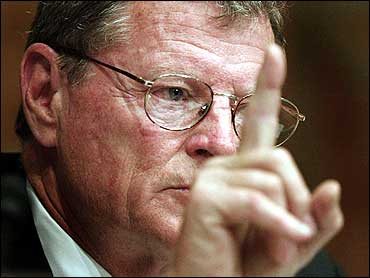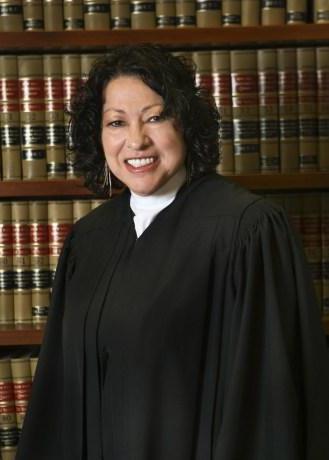If there was ever a time when the U.S. Supreme Court requires a passionate, articulate and unabashed voice for the environment — another William O. Douglas — that time is now. Should Waxman-Markey die in the Senate and the EPA be forced to regulate carbon emissions, the matter will likely land before the Justices and there are any number of other eco-catastrophes being handled as matters of law on which we desperately require the very best advocate the President can appoint.
If in the history of the environmental movement there was ever a call for bold, unequivocal and urgent leadership, that time is now. We stand on the precipise of cataclysm, from which we can withdraw only with vigorous U.S. action, and only U.S. environmentalists, in concert with climate scientists, can make that case.
Instead of acting on these imperatives, the President has nominated a former corporate lawyer to serve on the Supreme Court, whose “record evinces no clear bias in favor of or against environmental claims,” according to the bland and blanket letter of endorsement issued by 60 some-odd environmental groups.
The cascade of reasons why Sonia Sotomayor is a bad choice and our response is so very wrong are so numerous and obvious that I find it difficult to single out which are the most onerous. Three points, at least, must be mentioned:
1. Why didn’t we call for appointment of an environmentalist?
2. Why are we embarrassed to assert our convictions?
3. Why have we connived to launder Judge Sotomayor’s environmental record?
She is no Douglas. Earthjustice writes of William O. Douglas that,
In his dissenting opinion [in Sierra Club v. Morton], studied in law schools to this day, Justice Douglas expressed his concern for the environment and argued for the court to recognize the standing of inanimate objects of the natural world. “The critical question of ‘standing’ would be simplified and also put neatly in focus if we fashioned a federal rule that allowed environmental issues to be litigated before federal agencies or federal courts in the name of the inanimate object about to be despoiled, defaced, or invaded by roads and bulldozers and where injury is the subject of public outrage. Contemporary public concern for protecting nature’s ecological equilibrium should lead to the conferral of standing upon environmental objects to sue for their own preservation. The voice of the inanimate object, therefore, should not be stilled.”
Fifty years later, facing the catastrophe we accurately forecast and possessed of the only functional global solution, allied with a President who is beholden to us and, we think, share our analysis and prescription, and operating on a timeline measured in years, what do we do? We sign off on a Supreme Court nominee whose record is so bad that we must fudge it. A judge Michael Doyle’s neatly sums up:
She’s willing to grant standing to environmental plaintiffs but she doesn’t reach aggressively for jurisdiction. Corporations sometimes win and sometimes lose. She can write clearly and directly about the importance of environmental protection, but she refrains from surging into poetry.
At this late, desperate hour we require leadership in every forum with the courage and poetry in language. Sotomayor is no Douglas.
Embarrassed by our own convictions. “She’s ruled both ways on environmental cases, so it’s not like she’s ideologically committed one way or another, and that’s not what we look for in a judge,” Earthjustice President Tripp Van Noppen told Grist.
That’s utterly ridiculous. Of course we want ideological environmentalists on the bench, there are no other kind and we are locked in an ideological cage match to the death.
It is ideology to consider other species as having the right to exist independent of our whims and irrespective of their utility to us, and I want a Supreme Court Judge who subscribes to it.
It is ideology to view air, water and our public lands as held in trust for the common good, and I want a Supreme Court Judge who believes this.
It is ideology to ask that the interests of generations not yet born be considered in the decisions taken today, and I want a Supreme Court Judge with a long view.
It is ideology to prefer the simplest, most efficient and least material solution, and I want a Supreme Court Judge with frugal sensibilities.
And so on…
Van Noppen apparentlys has a much lower standard in mind. “She’s likely to honor citizens’ rights to use the courts to enforce the law, because that’s the way those laws are written, and to use the authority of those agencies to carry out their mission as it has been created by Congress,” Van Noppen told Grist. In other words, Earthjustice awards Justice Sotomayor top marks for acknowledging plainly stated federal law.
The Sierra Club and Friends of the Earth joined Earthjustice in the endorsement, for anyone keeping a running score (David Brower must be spinning wildly at this point). Greenpeace USA also signed, forfeiting some of the high ground it staked out with its courageous opposition to Waxman-Markey. Rainforest Action Network stayed off the list, maintaining it’s best-in-class record. A number of heavyweights signed on – NWF, National Audubon and The Wilderness Society, in particular – which means that the statement is both presented and understood as the position of U.S. environmentalists.
We are so enmeshed in the tangled skeins of pragmatism that it is difficult to recognize how self-destructive are our statements on Sotomayor. To put it in perspective, try to image any other major institution issuing a similar statement.
“Sotomayer ruled against labor half the time and that’s why she’s such a great nominee!” gushed SEIU Intl. President Andy Stern.
“Judge Sotomayor has handled abortion in an even-handed manner, that’s why we support her so strongly,” said Charmaine Yoest, President of Americans United for Life.
“Where federal law is written in plain English, Judge Sotomayor has no trouble reading it, and basic literacy is our standard for the Supreme Court.” testified Rodney G. Moore, President of the National Bar Association
Laundering the record. “Judge Sotomayor’s record evinces no clear bias in favor of or against environmental claims,” wrote the 60 environmental groups. I’d oppose the nomination on this analysis alone, as noted, but in my view, Sotomayor’s slim record cannot even be read as value-neutral.
The single major case listed in Sotomayor’s favor, Riverkeeper v. EPA, was an easy call (when it says “best technology available,” that means, you know, that some sort of technology must be used; you can’t just toss in a few new fish to make up for the ones you mangled in your cooling tower and call it even), and there are some distinctly uncomfortable Sotomayor decisions about which our 60 endorsing groups remain silent (see Environmental Law Update for full list)
Aguinda v. Texaco. Sotmayor sided with two other judges to throw out a class action appeal by indigenous peoples of the Amazon basin, for lack of standing, who sought damages for decades of ruinous environmental practices by Texaco. Although the case was brought in the jurisdiction where Texaco’s headquarters was located, Sotomayor ruled that plaintiffs were free to file suit in Ecuador, denying a series of claims – such as a requirement that each individual to be included in a 30,000 member class action must sign papers – that the Ecuador courts and legal system were inadequate to handle an intricate class action suit and susceptible to improper pressure. The case was refiled in Ecuador, right at the time Amnesty International launched a campaign challenging the integrity of the Ecuador judicial system and predictably, according to a close observor, “the challenges of indigenous groups against this petroleum behemoth have been all but squashed under the weight of Chevron-Texaco’s bottomless legal and public relations resources, as well as the political instability of the Ecuadorian Republic and its judiciary.”
Environmental Defense v. EPA. Environmental Defense, represented by Earthjustice challanged EPA’s certification that New York City would meet Clean Air Act ozone standards by a 2007 deadline. “State of the art computer models show that the New York area will not meet clean air standards for ozone by the 2007 federal deadline without stronger pollution controls,” stated Earthjustice attorney David Barron at the time, “yet EPA still signed off of the region’s current smog control plans. We contend that deprives people the health protection the law requires.” Sotomayor decided in favor of EPA and New York City failed to meet the 2007 deadline.
C’mon folks. We’re not going to save the world and stuff if we are afraid to state our convinctions and too timid to press politicians to move way pass present political bounds.




